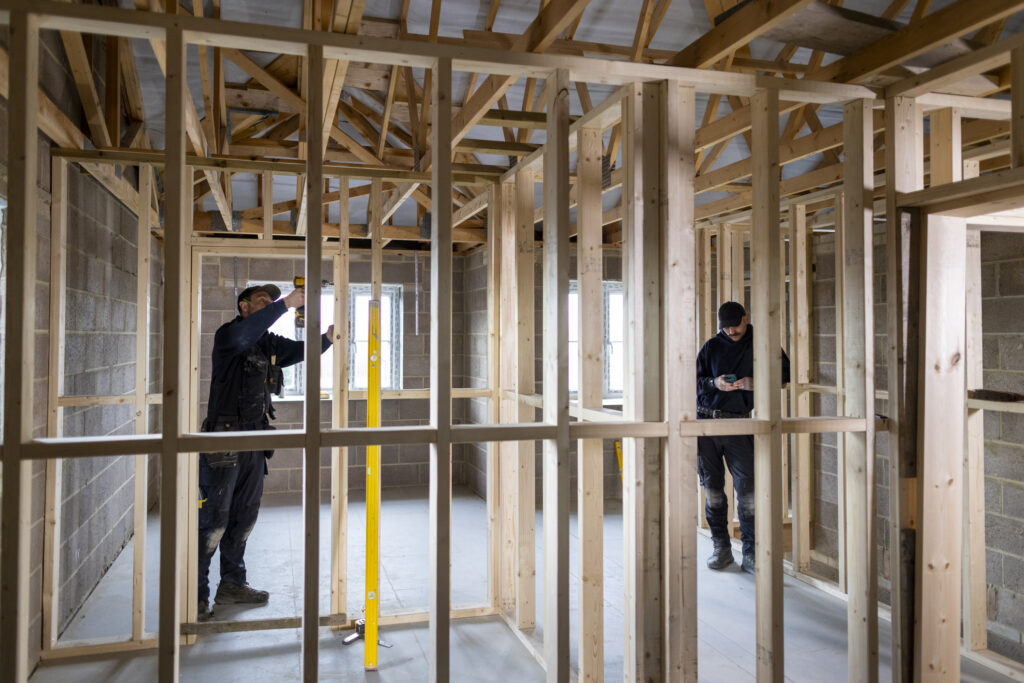
How one care provider used loan finance to transform both its service and its finances
Learning disability charity Mayfield Trust used a loan from Charity Bank to redevelop its site, transforming both its services and its revenue in the process.
Mayfield Trust offers a range of support to people with a learning disability in Calderdale, Halifax. It’s helped tens of thousands of people over the last seventy years. Recently, however, the charity has struggled to attract tenants for its large residential home – Mayfield House. So, the trust took out a £400,000 loan from Charity Bank to redevelop former outbuildings into six one-bedroom flats and a three-bedroom home, and convert Mayfield House into the charity’s head office and an activity centre. While many charities might consider taking out a loan to expand provision, Mayfield Trust has actually cut bed spaces. Here, Operations Manager Matt Larkin explains why that decision has helped to future-proof the charity.
Why did you decide to develop the flats and extend the main house?
Times have changed. The CQC (Care Quality Commission) has brought in new models for what good care looks like. Mayfield House was a large residential home. Sharing a house with 19 other people just isn’t considered appropriate now. It meant we had a lot of vacancies. We were way under 50% occupied and were seeing a decline in the local authority using our services.
We were haemorrhaging money; the rest of the charity was basically propping up this old-fashioned service, but we didn’t have enough money to change how we were doing things.
There was a real risk that we’d have to close the building. Some of our residents have lived with us for 30 years. They have roots, relationships etc; it just wouldn’t be right to force them to move on.
We had some outbuildings that had been used as flats years ago. They were in a mess, a really bad state of repair, but we knew they had potential.
Did you look into other options for funding?
Before I started at the trust, the previous team did speak to a property developer, who offered to develop the land and let the Trust use the property. He was going to cover the building costs, but we’d have been entering into a peppercorn lease – selling the land for £1. There were so many risks involved in doing that.
Why did you approach Charity Bank for a loan?
We didn’t know where to turn, so we went to a broker to discuss getting a mortgage. They put us on to Charity Bank. Things took a different turn straight away. Our relationship manager, Jeremy, is amazing. He understood the situation and the fact that we’re a charity. He looked at our business plan and made suggestions about the next steps. He said that we could look at doing more than we were planning, and has supported me to really maximise the opportunity. We were renting our head office and activity centre. Now that the residents have moved into their new flats, we’re redeveloping Mayfield House to use instead. It’ll save us £32,000 a year in rent.
Are your residents happy with the new flats?
They’re so happy. They have more privacy, independence and dignity. They have a beautiful new home and can get more involved with cooking, cleaning etc. And they have money to spend how they want to. Now that they’re not in a residential home, they can access benefits rather than just having their care paid for.
When I go to visit, I hear, “I love it here; I love my new flat; I’m doing my own cooking and shopping.” These are small things that most of us take for granted, but they weren’t able to do those things before. They have a place of their own now. It’s lovely to see the change in them, how excited they are.
It’s had a massive impact on the three new people that have moved in, as they were previously stuck in hospitals. One woman was really struggling to cope where she was living; it was genuinely frightening for her. The move has transformed her life and she’s going out into the community again.
So how many tenants do you have altogether?
Nine. We have six single flats now and a three-bedroom shared annexe. We’re at 100% capacity and have a waiting list. The CQC and local authority are delighted with the new flats. And in three weeks’ time we’re moving into our new offices in the main house. A month after that the new activity centre will open.
The loan has clearly benefited your service users. Has it also strengthened your charity?
Definitely. With the support of Charity Bank, we’ve gone from this huge residential home that was losing a lot of money and had dilapidated outbuildings, to a modern housing scheme with a waiting list. Our forecasts are completely different; it’s really transformed the charity. I can’t over-emphasise how much it’s impacted us. While we’ve reduced the bed spaces, we’ve increased our revenue; we’re getting a higher rate for the three new tenants as they need extra support. One woman has to have two staff members with her at all times as she has severe autism.
We were making a loss of £10,000 a month. Now we’re bringing in money. We’re in a much more secure position. Before, Mayfield House was basically being carried by the nursing home we have on another site. Just one vacancy at that nursing home could have meant we were in real trouble. The whole charity could have been at risk.
And, of course, the redevelopment has also increased our assets significantly.
How did you find the process of taking out a loan?
It’s a long process and quite difficult to get all the paperwork together, sort out the governance and so on, but it’s a professional process and Charity Bank are so supportive. Everything is done right so that Charity Bank can continue to be a good social investor. The interest rates are fantastic. We were able to draw the loan down in stages and didn’t have to pay interest on the money until we’d drawn it down.
What were your main concerns about taking out the loan?
It is a risk and you’re working with a board who are risk averse and who have never had to work in a different way. The charity had been stagnating, not moving with the times. And then I came in saying, “Right we need to do this and that.” I had to go thread through needle with the board to convince them that this was the right thing to do and that there’s an appetite for this kind of service. They needed a lot of reassuring. Jeremy helped me to give them that assurance. He supported me in talking to the board. He clearly knows the sector. One of our trustees is a finance director; Jeremy can speak her language. The loan process itself also reassured the trustees because there was so much detail; they could see it was being done right.
What would you say to other charities who are thinking of taking out a loan?
Look at the whole story, develop a picture of your needs and use that to inform your strategy. Involve Charity Bank early on and be open to involvement from other people. Plan, plan, plan and test the plan. Is it a sustainable model? Do you have the relationships you need? With Charity Bank, you do get that support. If someone put an idea forward that wasn’t sustainable, the bank wouldn’t invest in it.
What’s next for Mayfield Trust?
Now that we’ve pulled the redevelopment off, we’re looking at whether there’s an appetite to do more, maybe expand the model. I’ll be talking to Charity Bank about it in the future as we’re thinking about taking on another loan for new properties. We know what the needs are in the area and we could fill spaces quickly.
We want to help more difficult to place people – the most challenging, high risk tenants. These are vulnerable people living in hospitals and secure facilities who shouldn’t be there. They’re being taunted and bullied. The treatment really isn’t person centred.
We could make such a huge change to their lives – transform their care. That’s what I love doing.
About Charity Bank
Charity Bank is the loans and savings bank owned by and committed to supporting the social sector. Since 2002, we have used our savers’ money to make more than 1380 loans totalling over £580m to housing, education, social care, community and other social purpose organisations.
Nothing in this article constitutes an invitation to engage in investment activity nor is it advice or a recommendation and professional advice should be taken before any course of action is pursued.


